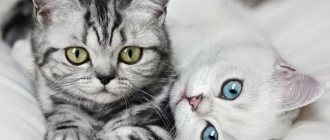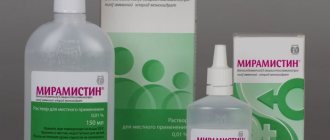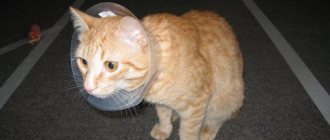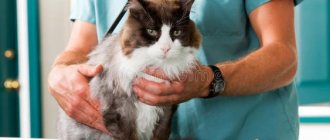How long does a cat sleep after anesthesia?
The duration of anesthesia sleep in cats and the recovery period depends on various aspects. The drug used and the method of introducing the animal into a state of sleep are taken into account.
If short-acting drugs are used, the condition required to perform the operation occurs quickly and the effect on the pet’s body stops just as quickly. Their scope of application is limited:
- dental procedures;
- nail removal;
- castration.
In general, they are used when a simple operation is required.
The modern method of gassing cats makes it possible to prepare the pet for surgery and, after just a couple of hours, return it to its original state. If deeper anesthesia is used, the period of postoperative sleep can reach eight hours.
If the veterinarian deems it necessary, he may recommend leaving the fluffy in the clinic for a while. Doctors not only know how to help a cat recover from anesthesia, but can also help the baby if breathing or heart problems arise.
In addition, a temporary hospital is a reason to save nerves, both yours and the animal’s. After all, when fluffies recover from anesthetized sleep, they can behave inappropriately. If you do not understand the methods that can normalize the animal’s psyche, the pet can be harmed, and the owners themselves will not be better off from the animal’s abnormal behavior.
When leaving the clinic, ask your doctor how long your pet will have to wean off the drug used in this case. Since the deadlines can be in a significant range of time, this question will be relevant.
The cat sleeps a lot after sterilization
Let us repeat once again that in many cases this does not mean anything terrible, and the owner needs to give his pet a normal rest. When a cat sleeps a lot after sterilization, its body recovers faster from the effects of surgery.
First day
This time is the easiest, since the cat will sleep anyway. If the animal is no longer young, then it will most likely sleep peacefully all day. However, even younger cats often sleep after anesthesia for about 12 hours, and begin to come to their senses only at the end of the first day. You shouldn’t hope for a fountain of vital energy at this time: even after a successful operation, the pet will still be lethargic. This is normal, no need to worry.
The only caveat is that when the cat wakes up, it should be thirsty. Her complete absence and apathy are a good sign to call the veterinarian.
On the second day
Most likely, you shouldn’t expect any special “pep” from your cat on the second day, since its body in any case will not have time to completely remove and neutralize the metabolites of the drugs used during the administration of anesthesia. But after a normally performed operation, the animal’s condition cannot be particularly sad:
- The cat is already showing interest in food, drinks water normally (and it is impossible to limit its drinking).
- If the sterilization was laparoscopic, then by this time the pet is already trying to play (but it should not be encouraged, as the stitches may come apart).
Cat and cat after anesthesia - features of the condition
We have already figured out that the animals sleep for some time after the operation. But after the cat regains consciousness, its brain will remain under the influence of a sleeping pill for about a day, like ketamine, which is used to put the whisker to sleep.
Most often, a cat looks sleepy after anesthesia. She may have gag reflexes, and problems with coordination of movements and speed of reaction may also arise. An increase in temperature along with chills may also be noticed.
In some cases, you can see the following picture: the animal comes to its senses, gets up, walks a few steps and collapses. A cat after anesthesia may also move its paws, as if it is rushing somewhere, or it will bump into an obstacle and begin to try to move it with its head.
It doesn’t matter how your cat feels after anesthesia, or how long it takes before it returns to normal, you need to provide the animal with a warm bed. Just don’t use a sofa or chair for these purposes. A disoriented animal can easily fall over.
Since your pet can vomit and even wet himself, be prepared for anything. In principle, this is almost normal, but if the vomiting does not stop for a long time (more than a day), the cat should be taken to a veterinary clinic.
Regarding high temperatures, periodically feel your pet's nose. If it is hot and dry, the animal has a fever. There is no need to see a doctor right away, but, as in the case of vomiting, if the fever persists, the cat should be taken to an appointment.
Another task of the owner in the post-anesthesia period is to ensure peace and safety. Usually, if the doctor’s recommendations for care are followed, after a day the animal should return to normal. Playfulness will return, the desire to eat and other indicators will return.
Coming out of anesthesia
Three different types of anesthesia are used for surgery. The cat's condition after sterilization surgery largely depends on what type of anesthesia was used.
- Inhalation (gas) anesthesia. One of the most effective methods of general anesthesia, after which the cat comes to its senses very quickly - almost as soon as the anesthesia mask is removed from its face. It is rarely used due to the high cost and lack of necessary equipment in hospitals.
- Muscle relaxants in combination with epidural anesthesia. This type of anesthesia is easily tolerated by the cat, and complete recovery from it takes a maximum of 8 hours. However, there are risks of postoperative complications, during which sensitivity and motor activity of the hind limbs are impaired. Restoring everything can take up to 2 days.
- Muscle relaxants with analgesics are used most often, but recovery from such anesthesia can take from 6 hours to a day.
The behavior of a cat after a sterilization operation at the moment of recovery from anesthesia can be the most unexpected:
- impaired coordination of movement (shaky and unstable gait);
- inappropriate behavior - from passive indifference to everything to open aggression;
- desire to run somewhere;
- inadequate reaction to surrounding people and what is happening around;
- disorientation;
- a clear desire to hide somewhere or hide in a dark corner;
- inexplicable meowing;
- vomit;
- uncontrolled urination.
How cats recover from anesthesia after castration
Castration is considered a simple and common procedure. Many owners of mature animals consider surgery a good solution. And to some extent they are right. The small predator not only does not lose its natural nature, but also gets the opportunity to avoid melancholy during the period of sexual hunting or hormonal problems from taking medications. An additional benefit of neutering applies to outdoor pets. Thanks to the operation, the number of stray kittens is reduced, and the animal itself is reliably protected from infections transmitted from street cats. In addition, a neutered pet does not lose social significance for other representatives of its tribe. But this is a separate topic for conversation, and we will find out how long it takes a cat to recover from anesthesia after castration, and what to expect.
It’s worth making a reservation right away - not a single veterinarian will give a definite answer. Each cat’s body is an individual and it is not 100% possible to calculate the animal’s reaction to the drug. For example, a surgeon may claim that the effect of the drug will last no more than three hours, but in fact the animal will lie motionless for 7-8 hours. By the way, anesthesia for a cat and a person are different procedures. The most common drug used for animals is to freeze the nerve endings. In this case, the pet's eyes may remain open.
Don’t panic if your cat takes a long time to recover from anesthesia after castration, it’s better to check his condition. To do this, you can shine a light into your pet's eyes. If the animal starts to squint, you can hold its eyelids. Ideally, the animal's pupils should begin to constrict. If this does not happen, things are bad. In this situation, you must immediately contact the surgeon who performed the operation. There is no point in contacting another doctor, because he does not know the dosage of the drug, nor does he know its name.
If you are embarrassed that the cat is recovering from anesthesia for a long time, but, nevertheless, is active: its paws and tail are twitching - this is normal. Not every pet strives to return to a full life after surgery. Some animals prefer peace, quiet and sleep. From their point of view, this way of moving away from the procedure is better than others.
Cat's reaction to anesthesia
Immediately before the operation, before the introduction of anesthesia, it is possible to administer special sedatives. This is usually done to minimize stress on the animal. The most commonly used anesthetic drug is Propofol, but other drugs can also be used. The time it takes for a cat to fall asleep after the administration of an anesthetic may vary; it ranges from 10 to 30 minutes.
In addition to anesthetics, muscle relaxants are also used to immobilize cats, which promote additional muscle relaxation. To assess the cat's condition, it is connected to special sensor devices. This allows you to promptly notice any deviations and correct actions if necessary. The cat can remain under anesthesia from one to three hours, depending on the complexity of the operation.
How to behave when a cat recovers from anesthesia, what to do?
Some people advise washing the animal in warm water, but this is not a necessary procedure. Yes, the animal really needs warmth, because it has temporary problems with blood circulation and heartbeat. But to warm the animal, a warm blanket or terry towel is enough.
You can also lightly massage the cat's paws to stimulate blood flow. But all this is suitable for pets in anesthetized sleep. When the cat wakes up, you can warm it up in the standard way - with your body. But it is worth considering that not every animal will be happy with a forced hug. Some pets prefer to be alone at this time.
There is no need to worry if your cat vomits - this is a common occurrence. An animal can vomit bile even on an empty stomach. Therefore, do not place your pet on the sofa or armchair to avoid contamination. In addition, after anesthesia, the cat may temporarily lose control of its bladder. If this happens in your case, you may notice a foul odor from the urine. This is also normal - hormones come out.
It doesn’t matter how the cat recovers from anesthesia after castration, good or bad, at first he’s unlikely to want to eat. Therefore, do not try to give your pet a treat or give him something to drink. When the pet recovers, it will start eating on its own. By the way, many cats gain weight after castration.
In general, your cat needs simple things after neutering:
- attention;
- warm;
- peace.
These are the main components of successful rehabilitation.
Place for a pet
The place where the animal will be located after surgery and general anesthesia should under no circumstances be located on a hill, even a small one. Cats under the influence of anesthesia can be very weak and may experience confusion. Jumping, even from a minimum height, can lead to injury or rupture of the postoperative suture.
The cat's bedding should be warm and located where the pet will not be cold, in a place protected from prying eyes, bright light and drafts. After general anesthesia and surgery, the furry beauty will have problems with thermoregulation for some time, so it is very important that she is warm.
It would be nice to prepare a soft, warm blanket for her that will be warm enough and at the same time light so as not to weigh the cat down. You can place a warm heating pad wrapped in a soft cloth next to the cat.
It is advisable that there are no sharp corners or objects that could cause injury near the cat, as well as wires in which the pet could become entangled. You will need to place a bowl of water near the warm bedding.
When to call a doctor
Most often, a cat feels satisfactory after anesthesia. Side effects do occur, but most often they are short-term. However, there are a number of signs, if they persist, you should urgently take your pet to the veterinarian:
- pallor, blueness, redness of mucous membranes;
- irregular heart rhythm, weak, twitching pulse;
- temperature disturbance, lack of reaction to touch;
- you see that your pet is feeling unwell, this can be reflected in everything.
Contact your veterinarian, even if it's midnight. After all, anesthesia seriously strains the pet’s heart and respiratory organs. Timely help is sometimes the only chance to save a cat’s life.
Using anesthesia for cats
Many cat owners who care about the health of their pets are interested in how harmful anesthesia is for an animal. In general, all drugs that are used as anesthetics for animals are safe. They act quite gently on the cat’s body. The main thing is to choose the right dose, which directly depends on the size of the cat, as well as on the data obtained from the test results.
Before performing the operation, the specialist must evaluate the functioning of the heart, how stable it is and whether it will withstand anesthesia. No one can exclude the possibility of complications occurring during the operation, but it is quite possible to do everything to minimize these risks. If all measures aimed at preparing for surgery are carried out correctly and carefully, then the likelihood of complications occurring is almost zero.
Typically, contraindications for the use of anesthesia for a cat are its age (over 10 years), heart or respiratory disease, estrus period, and the presence of viral diseases. It is advisable to use anesthesia for a cat no more often than once a year. Thus, the load on the body will be quite normal.
Food and drink
It is possible that the cat will want to drink, but you can start giving her water only 3-4 hours after the operation; before that, you can moisturize your lips and oral mucosa with a moistened finger, wrapped in a bandage, or literally drip water into your mouth drop by drop from a pipette.
You can start feeding your cat a day after the operation, but it is not advisable to use dry food; it is better to purchase canned cat meat of the same brand as drying, or give your pet meat baby food, to which you can add vitamins recommended by a veterinarian.
All food should be semi-liquid to reduce the risk of constipation after surgery. Very useful during this period are low-fat cottage cheese with kefir, boiled vegetables, ground in a blender along with lean meat to a puree-like state.
The cat's toilet after the procedure
During the postoperative period, light-colored litter should be poured into the cat's litter box in order to notice possible bleeding in time. It is better to purchase a soft adsorbent to avoid irritation.
After castration, some owners put a small diaper on their pet, in which they have previously made a hole for the tail.
It may be that the cat does not have a toilet for a long time - neither big nor small, or the urine comes out little by little. This is quite normal.
Vaseline oil will help cope with constipation. It is poured into the animal’s mouth in a small amount; if after 20 minutes no negative reaction is observed, another 15-20 grams are given. After 3 hours, the animal's intestines should gently empty.
Post-anesthesia care
After surgery, when returning home, you should place the cat on a bedding on the right side, since on the left side there is an additional load on the pet’s heart, and it already has a hard time after being exposed to general anesthesia.
To prevent the cat from licking the post-operative wound, a special protective blanket is put on it. It is better to have two of them in order to change them later after dressings. It would also be appropriate to purchase or make a special collar that can be put on the cat after it begins to move. This will not allow your pet to reach the wound.
Sometimes, after anesthesia, a cat may urinate involuntarily, and vomiting may occur. That is why you need to watch her very carefully; you can lay out disposable diapers to change them when they get dirty. If there is a urge to vomit, you can substitute a plastic bag.
In the first hours after surgery, the cat cannot blink on its own, which can cause its eyes to become dry. After consulting with your veterinarian, you can drip artificial tears to your cat every half hour, while using your hands to gently close and open the eyelids so that the drops are distributed evenly over the eye.
It is necessary to measure the animal's temperature periodically. The norm for a cat is 38 - 39.5. If the temperature is below normal, you can warm your pet using warm heating pads. However, if after an hour the temperature remains below 37 degrees, you need to cover the cat with heating pads or wrapped hot water bottles and urgently contact your veterinarian, as a long-lasting low temperature can be very dangerous. Owners need to remember that they should not apply a heating pad to the seam itself, because increased heat in this area provokes the development of an inflammatory process.
Cat under the influence of anesthesia
When a cat is under anesthesia, many owners begin to worry about its condition and panic ahead of time.
Signs that a cat under anesthesia is fine:
- When the eye is exposed to flashlight light, the pupil constricts;
- He moves his tail or paws;
- He is breathing quickly and intermittently.
Vomiting, lack of appetite, and seizures are also considered normal. The first time after surgery, the pet will feel weak and will not be able to control its movements. Complications after castration are extremely rare, because this operation is considered easy.
Caring for your cat's stitches after surgery
Caring for a cat's suture after surgery is one of the main conditions for the cat's rapid rehabilitation. After abdominal surgery, the animal is given a blanket that will prevent it from licking the seam. If the operation was performed on a limb or on a place that the blanket does not protect, then the animal is put on a special collar. The duration of wearing such a collar or blanket is determined by the attending physician. On average this period is 10 days.
You should not let a cat wearing a blanket or collar outside, as it will not be able to defend itself if it is attacked by other animals. After surgery, do not let your cat go outside until the attending physician allows it. Also, do not remove the collar or blanket, as the cat will lick the seam, which will lead to severe inflammation, leading to repeated surgery.
A very important point is the treatment of the suture after surgery. The drug for treatment and the frequency of its use are prescribed by a veterinary surgeon.
It is important to approach the treatment of sutures with all responsibility, since the speed of their healing depends on its quality. The formation of crusts on the sutures after surgery in cats should not be allowed, since the healing process does not occur under the crusts. If crusts have formed, you need to soak them and carefully remove them, or contact a veterinarian for this.
If you see severe redness around the suture, discharge of fluid or pus from the suture, or smell an unpleasant odor from it, contact your veterinarian immediately!
Khomutinnik Ekaterina Igorevna Chief veterinarian. Specialization: soft tissue surgery, abdominal and thoracic surgery, endosurgery.
Possible complications
A classic cat castration operation lasts no more than 20 minutes. The recovery period is usually short; the pet recovers from anesthesia in an average day. Veterinarians recommend monitoring the animal for two days after surgery, monitoring how the cat behaves after castration, and not leaving it alone. This is due to the use of anesthesia, the side effects of which may appear during this time.
Some negative consequences of the operation are possible within 2-3 weeks after the intervention.
In what cases is it important to take your cat to the veterinarian:
- Bleeding. Occurs when the seams come apart. The blood flows in a thin stream and stains the fur. Treatment is surgical, so it is important to contact a veterinary clinic as soon as possible.
- Purulent inflammation. Possibly if the wound has become infected. Pus appears green, yellow, white, thick, with an unpleasant odor. Such a consequence is treated with antibiotics.
- Edema. It can develop if dirt or infection is brought into the wound. The scrotum swells, and the animal often experiences pain.
- Hernia. This is tissue loss that can occur, especially if the cat is older. The hernia is removed surgically; it is strictly forbidden to repair it yourself.
- Sepsis. Appears after a secondary complication after inflammation, hernia and other pathologies. At the same time, bacteria enter the blood and the temperature rises. Antibiotics are used for treatment.
- Pulmonary edema. The phenomenon is rare, but extremely dangerous. Due to heart failure, pressure in the pulmonary circulation increases, plasma enters the lungs, and oxygen supply decreases. The animal wheezes, coughs, and turns blue. If you don't get veterinary help quickly, the cat will suffocate.
When to call the doctor?
Cats are living organisms, each of which has individual characteristics of its physiology, so complications after surgery in a cat sometimes cannot be avoided, even if the care for it was the most thorough. You should urgently contact a veterinarian if:
- You are concerned about the appearance of the suture (redness around the suture, discharge of fluid or pus, unpleasant odor);
- The cat's body temperature dropped below 37 degrees or rose above 39.9;
- Appetite after surgery does not appear on the second day;
- Three days after the operation, the cat had not recovered from defecation;
- The cat does not urinate for 12 hours after surgery;
- Lethargy persists on the second day after surgery;
- The cat started vomiting;
- Any other deterioration in your cat’s health that you have noticed.
Complications that are promptly taken under control by a veterinary specialist can most often be eliminated quickly. Responsible implementation of the doctor’s recommendations after surgery on a cat is the key to its quick recovery, and this article is your help in recognizing the first signs of trouble. Let your animals be healthy!
Options for helping you recover from anesthesia
To help the animal, it is recommended to use an integrated approach aimed at normalizing the body’s condition.
- Give more liquid. If your pet drinks water, the renal system works more actively, removing urine. Together with it, toxic substances and active anesthetic components of anesthesia are eliminated.
- Eliminate exposure to any stress. During the first few days, it is forbidden to touch the animal or play with it. This is especially true for families with small children. The cat needs more sleep to gain strength for physical recovery.
- Normalize the ambient temperature. The pet should not be hot. You can leave the window open to let in cool air. When oxygen enters the brain, the negative effects after anesthesia penetrates are eliminated.
- Balanced diet. It is not recommended to change food immediately after surgery, as the pet may refuse it, which will lead to a sharp weight loss and loss of strength. You can add other ingredients to your regular food. For example, lean beef, cottage cheese, and milk are good during this period in addition to dry food, which contains all the vitamins.
- Give medications prescribed by the doctor. It is usually an anti-inflammatory and antibacterial agent. It is recommended to treat the wound with antiseptic solutions, this can be hydrogen peroxide, chlorhexidine, brilliant green. Treatment will help the wound heal faster and prevent various complications.
- Anesthesia. Veterinarians recommend giving painkillers in the first 5-6 days after laparoscopic surgery so that the cat can better tolerate the wound healing period. This is very painful and can cause sudden mood swings.
- Antipyretic medications as needed. If body temperature rises during the rehabilitation period, this may be normal if the period is short. The animal is given mild antipyretics that do not have a toxic effect on the liver.
- Use of multivitamins. If a blood test reveals a decrease in vitamins, minerals and microelements, multivitamins may be prescribed during the pet’s rehabilitation period. They increase the metabolic process, which leads to increased regeneration of damaged tissue.
Measuring a cat's temperature after surgery
After surgery, your cat's temperature will need to be measured every 3-6 hours. Normally, a cat's temperature is 38-39.5 degrees. After anesthesia it may be slightly reduced. An electronic thermometer is suitable for measuring temperature. Lubricate its tip with baby cream or Vaseline oil and measure the temperature rectally.
If the temperature drops below 37.5 degrees or rises above 39.9, contact your veterinarian immediately!
A warm blanket that you put in a bed prepared in advance for her will help keep your cat warm.











